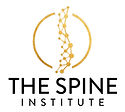
Nuclear bone scan (or scintigraphy) is an imaging technique that utilizes bony uptake of a nuclear isotope to produce images of the skeleton. An isotope (i.e. Technicium99) is introduced via an intravenous line, and the patient waits for 2-3 hours for the isotope to be taken up by bone cells. A scintigraph or a computed tomogram is then obtained to create visual images of the skeleton. Because isotope uptake is based on osteoblastic (growth) activity, areas of increased bone activity results in increased isotope uptake. Areas of decreased bone activity or destruction result in decreased uptake. Both types of uptake can indicate disease states.
Nuclear bone scans are useful in detecting subtle bone damage or fracture. Bone scan is also useful as a screening tool for determining metastatic activity of some types of cancer.
.jpg)
